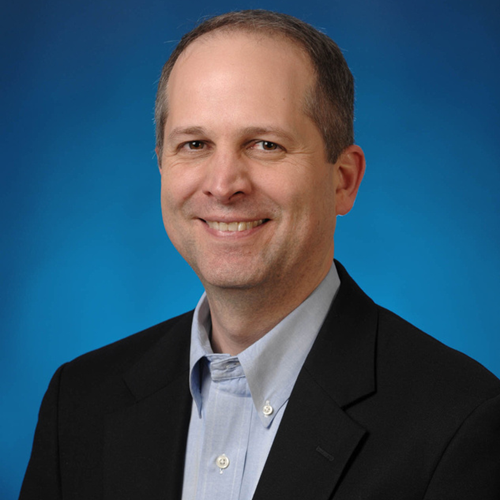Gary Boomer is a visionary and strategist of Boomer Consulting, Inc., an organization that provides consulting services and peer communities to leading accounting firms. Gary is recognized in the accounting profession as the leading authority on technology and firm management. As a consultant and speaker around the globe on management and technology related topics, Gary’s expertise has led me to refer to him as the Pied Piper of the top 100 firms in the country.
Gary and I had the opportunity to speak about leadership and advisory services on the Scaling New Heights Podcast. Here is a transcript of our conversation.
Joe: I've heard you say before that there's a direct connection between leadership and advisory services. Why is leadership so important?
Gary: I get asked all the time, “What is the one differentiator between great firms and existing firms?” I would say that it’s always leadership, regardless of whether it’s advisory services or compliance services. One of the reasons for that is that there are three things that add value when you look from an entrepreneurial perspective. The first is leadership that provides direction. The second would be relationships that add competence. The third would be creativity, which creates new capabilities. If you have those three, then you can add value and that is what advisory services are all about – adding value to the client.
Often, we hear clients say, “I want this” rather than “I need this.” Clients, when they want something, don’t have to justify it and they are willing to pay more for something they want. That’s why we want the advisory services to be in that category.
The biggest challenge that we see in firms of all sizes is the change from compliance to what people call reliance. We call these “above the line services.” I think there are reasons for that and I’ll get into those reasons later. But the challenge today is that most firms are making more money than they’ve ever made. So, the question becomes, why should they change?
Joe: I want to come to that topic of “above the line.” You mentioned it; let's go ahead and call attention to it. What do you mean by “above the line” services?
Gary: I’ve tried to position this in a graphic throughout my career and over the last five years we’ve gotten clearer. If you will draw a horizontal line on the paper and say that your compliance services of tax and assurance services are below the line, then above the line would be performance services, like business advisory, outsourced CFO, analytics, forecasting, family office and those kinds of things. Then above that would be strategic services: we call those level three services and they’re above the line. Those would be services like strategic planning, succession planning, mergers and acquisitions.
You really have “below the line,” compliance, and “above the line,” level two and level three services. Some firms are comfortable offering those. Some people are not as comfortable.
Joe: What makes them uncomfortable and how can accountants and bookkeepers become more comfortable in that “above the line” service area?
Gary: I think we have used the term trusted business advisor for a long time and I would say that most CPAs or accountants are trusted technical advisors when they’re below the line, because they are focused on hindsight and perfection. When you move above the line, at the performance level, you’re focused on insight and progress. We say that all progress starts with the truth; so, where you are today and where you want to be, a year from today, six months from today, is very important. As a trusted advisor, you can help your clients get there. By using some of those compliance services and data, then you become an outsourced CFO or do more analytics and forecasting for the client. At the highest level, this is where foresight and progress really occur: at strategic planning, succession planning, and mergers and acquisitions.
So, to be innovative today, I think you need to have hindsight, insight and foresight. And most CPA’s have that; it is just that they’re more comfortable when they know how to price the compliance services.
Joe: I hear you say –that there is one reason they don't embrace it, Gary. And if I'm hearing you correctly, that one reason is pricing. If they knew how to price better, they could go into this more confidently. And do you think there's also a knowledge gap? Do you think that firms just don't feel as though their core expertise is above the line?
Gary: Well, in some cases I think that’s probably true, but they’ve always been taught that value is created by time. And that is a bad lesson that we teach many people coming into the profession. Because value is created in the eyes of the client in many ways, and it’s all not about the effort you put in but the results that come out of that engagement.
So, I do think we need to do training in that area, but also packaging the services and having a menu of services to offer clients can be very helpful. I mention the menu, because if you go into a salon, you don’t just go in and get a haircut. Normally, they will offer you a package of services that could include washing your hair all the way to a massage or a manicure. I think that is how we need to think in our profession. How do we offer services that the clients really want and are willing to pay for? Joe: I like that menu approach, too. If you have a complex need, it gives you the ability to stack in more of the “above the line” items and create a deeper, richer, more value-infused package. But if my needs are more simplistic, I can streamline when I’m purchasing from the firm. You’ve worked a lot in Boomer Consulting in the realm of the larger firms and you also have deep knowledge into the small firms.
I would say Woodard is just the inverse. At Woodard, we work extensively with the small firms and we have deep knowledge into the larger firms. The small firms that support small businesses are saying, “Mom and Pop don't need advisory services.” Well, I’ve got an analogy I can bring in here that might help some of the small firms listening in our audience today.
I don't have a lot of hair. For those of you who've seen me lately, my hair's pretty much gone, but I still go to the same place to get my hair cut that I’ve always gone to, even when I had hair. They have all these amazing offerings for people that have hair.
Normally my haircut's 14 bucks, but the other day they charged me 10 bucks. I said, "No, I'm not eligible for a senior discount." I thought it was the senior discount. I said, "You can charge me the whole 14."
The lady said, "No, this is not the senior discount, this is what we call the simple haircut discount." Basically, I didn't have enough hair to pay full price.
That showed me a couple of things, and I'm just extending your analogy here. It showed me that the haircut chain understands value pricing, which blew me away. The reduced price they charged me was based on the reduced value I received. Second, if we can create streamlined, reduced-value packages for businesses that have lesser needs, like I have less hair, if they have a streamlined need and we can create a streamlined package, they are going to purchase those services more readily.
.png?width=150&height=63&name=TWRlogo-regmark_blueblack%20(1).png)
.png)










Do you have questions about this article? Email us and let us know > info@woodard.com
Comments: